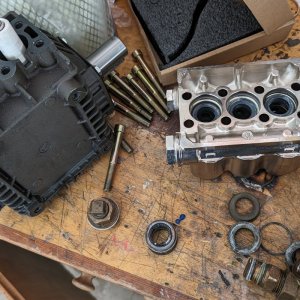On the older Ski Nautiques/Correct Crafts which are competition ski boats. On the bottom of the boats under the floor they have wooden beams called stringers. The wood has foam packed around the wood. The foam is for floatation and noise reduction. Once the foam gets wet it NEVER dries out even if stored inside. Wet foam then rots out the wood. When this foam gets wet I have read cases that it adds over 300 pounds of weight putting pressure on the hull then they start to crack. I know you can not stop the rotting wood. But do you think you could put a dehu inside a boat on top of the floor with plastic over the boat making a tent and pull that moisture out of the foam?
Golden Boy
Golden Boy


